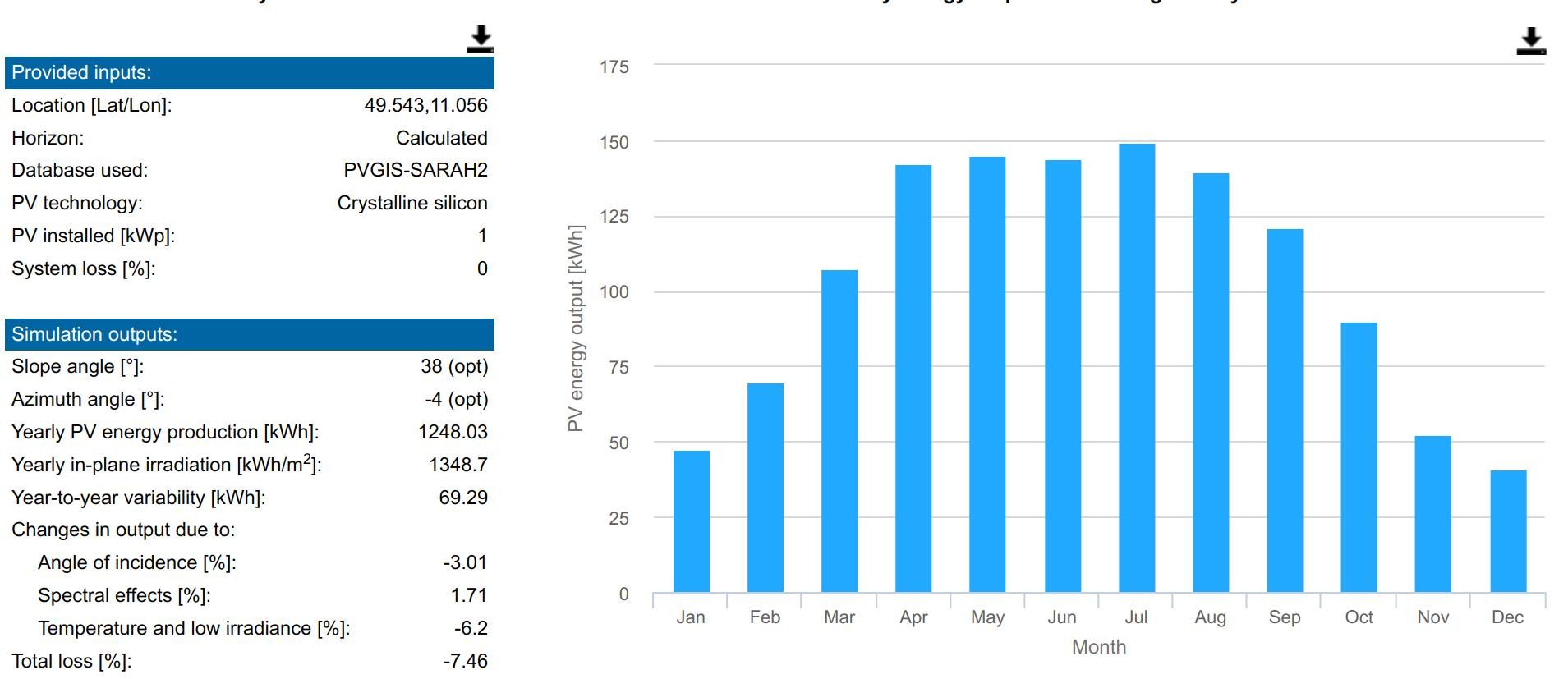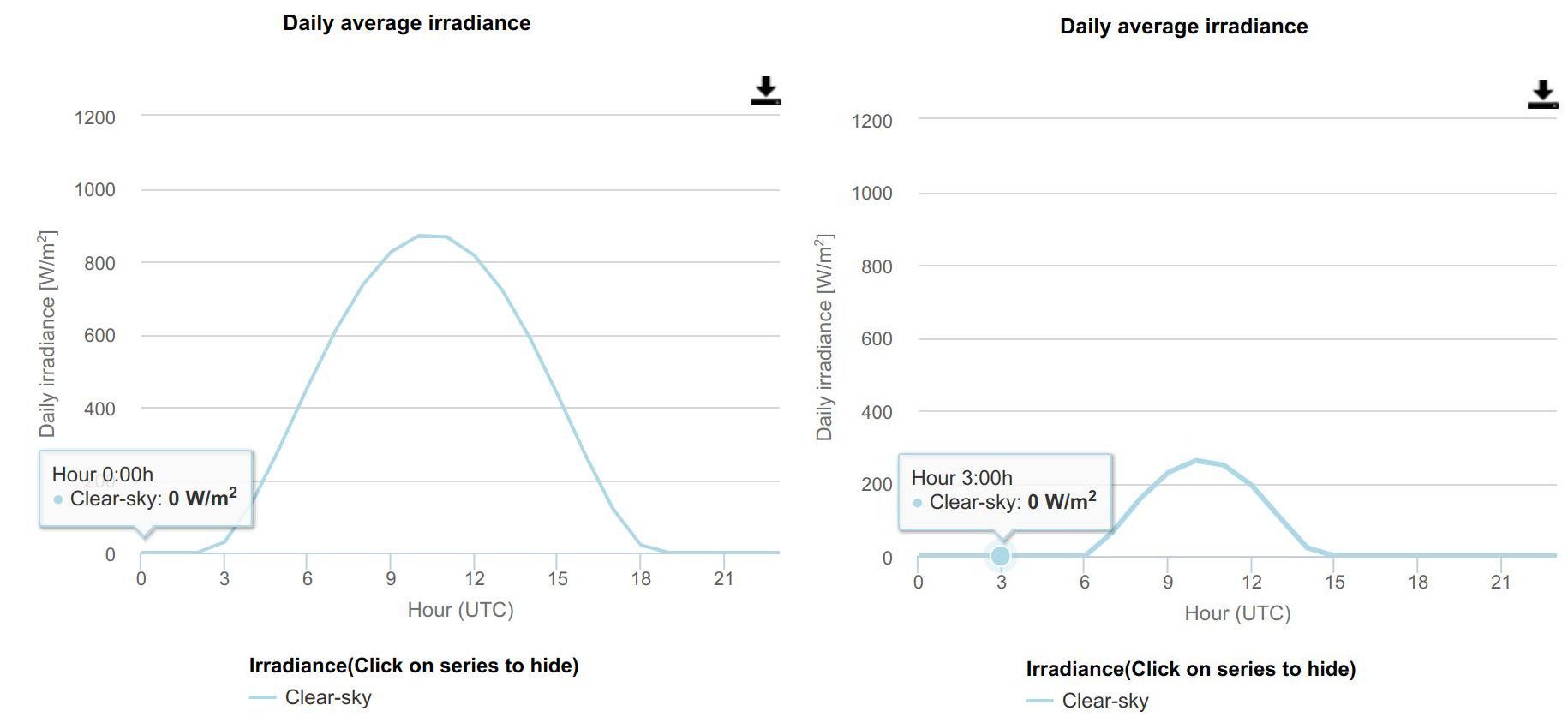Solar yield variability
Let there be light! Unless you live above a polar circle, you can count on one thing: Tomorrow is another day.

"The sun doesn't shine all the time" is something you hear from time to time, especially in discussions that revolve around the availability of solar energy. Leaving aside the fact that the fusion reactor sun has been shining 24/7 without interruption for over 4 billion years (and its output is continuously increasing slightly), the fact that tomorrow is also another day is even more certain than the proverbial Amen in the church.
Yes, it may be cloudy, raining, snowing or fog forming tomorrow, but it will not be night. The difference in radiant power hitting the earth during the course of the day is about a factor of 3.3 between a cloudless day and a cloudy day. The difference between summer and winter in the same weather conditions is about a factor of 2. This means the difference between a clear summer day and a cloudy winter day may well be a factor of 6.6. The following table shows a few exemplary values:
| Cloudiness | Summer | Winter |
|---|---|---|
| clear | 1000 W/m² | 500 W/m² |
| cloudy | 600 W/m² | 300 W/m² |
| overcast | 300 W/m² | 150 W/m² |
In addition, winter days are significantly shorter than summer days, which again results in less radiant energy. (Since the radiation power is also only available for a shorter time during the day).
Course of the year
This can be seen in detail in this diagram over the course of the year:

While 1kWp of power (approx. 4.5m² solar surface) April-August provides approx. 130-150 kWh per month, in December and January it is only 40-50 kWh. So if the usual demand in your household is - let's say - 20kWh/day, this means a monthly demand of about 600kWh. Consequently, to achieve this in January and December, a PV module capacity of 15kWp is required. At least.
In the months April-August such a power would correspond to a daily yield of about 75kWh - if there would not be PV oversizing.
Even with a well-dimensioned power plant from us, one will be able to charge his electric car in the months of November - February beyond the regular supply of the household only in exceptional cases or rarely. The rest of the year certainly yes - and free of charge.
Course of the day
A very similar picture as in the course of the year can be seen over the course of the day:

In summer the light curve goes from 3:00 to 18:00 (south orientation), in winter 6:00 to 15:00. Not only is the yield lower in winter, the lightless period is also longer and a power storage system must provide more capacity correspondingly to bridge this.
All of these problems exist, but an experienced system builder is aware of these problems when designing a photovoltaic system and can provide solutions.
Rule of thumb, the capacity of the electricity storage should roughly correspond to the following parameters:
- Not smaller in kWh than the real (see oversizing) kWp power of the PV generators. This is to avoid that the power storage is loaded with more than 1C during charging.
- Ideally 2 times the average daily consumption. So if you use an average of 20kWh per day, the power storage should be 40kWh.
- More is always possible, but costs. In between is also possible and can be optimized by your consumption behavior.

